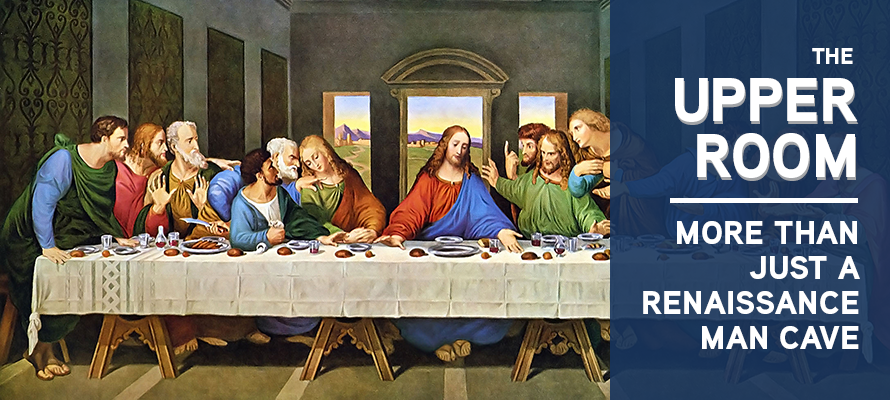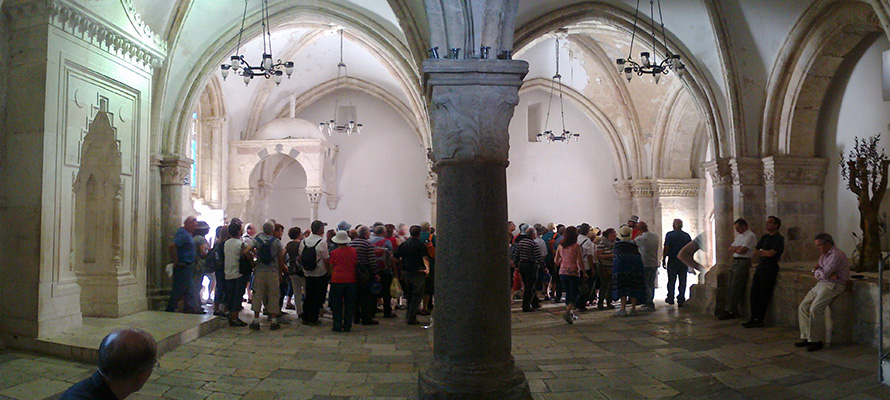
When the Upper Room is mentioned, the first thing that might come to mind is Da Vinci’s The Last Supper. In his version it’s a room with a high ceiling, big enough to accommodate a table for thirteen diners (perhaps even more if they didn’t all have to sit on the same side of the table). The rolling hills outside are perfectly framed by the three windows that line the back wall and provide a nice view for those gathered there. Although Da Vinci had a good eye for a proper dinner party atmosphere, his vision of the Upper Room isn’t quite what one would presently experience.
The Upper Room of today seems out of place compared to its neighboring buildings. Years of destruction and re-construction have left it with Gothic style sweeping ceilings, arches, and columns that wouldn’t have existed when the Twelve gathered there. But regardless of the current décor, the reality of what took place in that space continues to shape hearts today.

When a Tekton Pilgrim visits the Upper Room, they are joining the vast number of the faithful who have flocked to this site since the fourth century. As soon as they enter they become a part of the events that occurred there 2,000 years prior. Walking across the room, they may be standing in the spot where Jesus was sitting when he instituted the priesthood at the Last Supper. Or perhaps the resting pilgrim across the room is sitting where one of the apostles once reclined while Jesus was washing his feet. Maybe the parish priest whose gaze is sweeping across the room is tracing the path that Thomas once crossed when he approached the resurrected Jesus to verify his crucifixion wounds.
Time has passed, the surrounding scenery has changed, and the interior has experienced cycles of renovation. Nevertheless when one climbs the stairs and steps foot inside this sacred space, they are truly entering into the timeless mysteries that form the foundation of the Catholic faith. May all be inspired to take part in them; to be a servant to others, to have faith amongst all doubt, to be accepting of the Holy Spirit, and to be fearless in living the truth that the very apostles present at the Last Supper have passed down, and continue to pass down, to countless generations.
When they had entered the city, they went to the room upstairs where they were staying, Peter and John, and James, and Andrew, Philip and Thomas, Bartholomew and Matthew, James son of Alphaeus, and Simon the Zealot, and Judas son of James. All these were constantly devoting themselves to prayer, together with certain women, including Mary the mother of Jesus, as well as his brothers.
– Acts 1: 13-14



